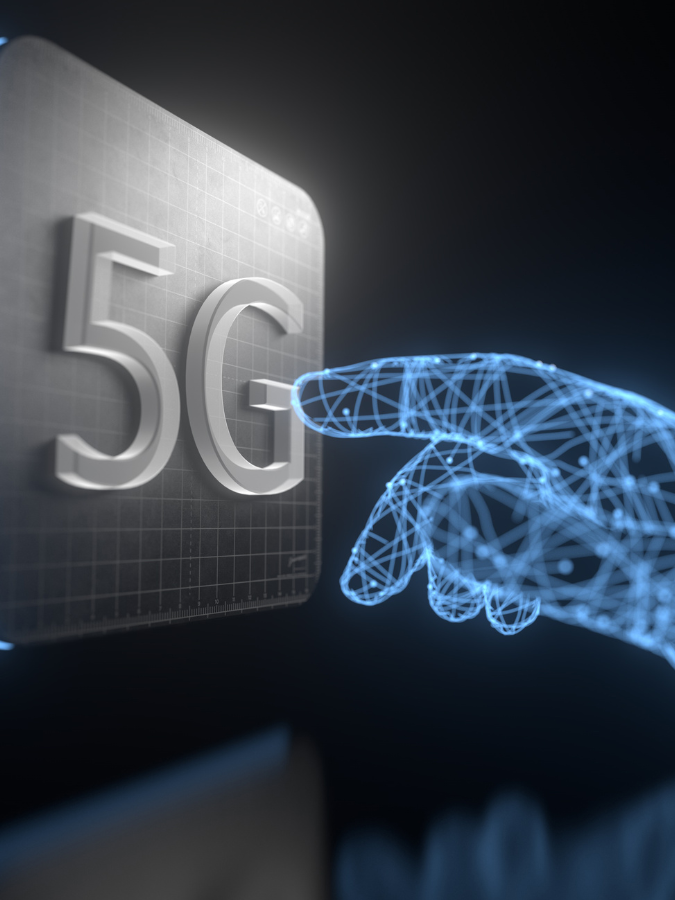Samantha ran a tiny plant shop in the corner of a busy neighborhood. She wasn’t trying to build an empire—just wanted her handmade pots and curated succulents to reach more people. But her online orders kept glitching. The POS system froze every time the line got long. Her Instagram live sales? A pixelated mess.
Then one day, her internet provider upgraded the area’s network. She didn’t think much of it—until her checkout process stopped lagging. Video calls with suppliers ran smooth. A weekend plant drop on TikTok sold out in three hours.
She didn’t install a fancy new system. She didn’t hire a tech team. She just had 5G.
And for businesses like hers—the ones without IT departments or deep pockets—that made all the difference.
This isn’t a story about faster downloads. It’s about how better connectivity quietly shifted what small businesses could do—and who they could reach.
The speed that rewrote the rules
Before 5G, livestreaming from a small shop felt like a gamble. Sometimes it worked. Most times, it didn’t.
Milo, who runs a vintage clothing store, used to prop his phone on a ring light every Friday night to showcase new arrivals. His followers loved the idea—but the stream kept lagging. Comments came in late. The video froze mid-sentence. People gave up and logged off.
Then one Friday, everything just worked. No buffering. No awkward delays. He didn’t even know his phone had switched to 5G.
That night, he sold out half his inventory in real time. People tuned in, commented, placed orders while he was still talking. It felt less like a tech upgrade and more like someone had lifted a weight off his shoulders.
Faster doesn’t just mean convenient. It means being able to react, speak, and sell without waiting on your signal to catch up. It means your customer sees the dress the moment you hold it up—not thirty seconds later. That kind of immediacy used to be a luxury reserved for big brands with high-end gear.
Now, it’s happening in local shops, food stalls, and garage-run startups.
And in a world where attention is fleeting, speed might be the only thing that keeps someone from scrolling past.
Remote work, but for the underdogs
Jonah never planned to run a remote team. His web design business started with him and his childhood friend working from a shared studio downtown. When the pandemic hit, they tried working from home—but calls dropped, files took forever to upload, and collaboration felt impossible.
Then came 5G.
Suddenly, large design files moved like they used to on office Wi-Fi. Meetings ran smoothly on phones without draining data or patience. They hired a freelance copywriter who lived three cities away. Then a virtual assistant from another country. None of it felt complicated.
The shift didn’t require corporate tools or deep pockets. It just needed a stable, fast connection—something small businesses had struggled to get consistently.
5G didn’t create remote work. It made it actually doable for the folks who couldn’t afford high-end setups. It meant less scrambling to find Wi-Fi and more getting things done—wherever, whenever.
Pop-ups, food trucks, and mobile-first dreams
Amira runs a Filipino dessert truck that parks outside different offices around the city. For years, she scribbled orders on paper and accepted cash only—partly out of tradition, partly because her card reader barely worked unless she parked near a café with decent Wi-Fi.
She didn’t change her setup. But once her mobile network upgraded to 5G, everything changed on its own. Suddenly, her payment app stopped crashing. She started offering mobile pre-orders and saw lines shrink. Customers tagged her in stories and reels, and she could actually repost them without waiting for Wi-Fi at home.
Mobility had always been her edge. But until 5G, it came with limitations.
For businesses that move—pop-ups, delivery services, food trucks, mobile clinics—connectivity was often the bottleneck. Not the idea. Not the effort. Just the signal.
5G took that friction away. It let small, mobile-first businesses show up, serve fast, and stay connected without asking anyone for a password.
Smarter tools for smaller teams

Elena and Marco run a tiny cafe with three part-time staff and a whole lot of moving parts. For years, they used a basic inventory notebook and counted by hand every Monday. Orders got missed. Expired milk got tossed. It was the kind of chaos that felt normal—until it wasn’t.
One day, they tested a new smart fridge with real-time temperature monitoring. It alerted them when the door was left open. They added a tablet system that tracked stock automatically. Suddenly, they weren’t guessing anymore.
What made it work wasn’t just the tech—it was the connection behind it. 5G kept their devices synced without lag. No more Wi-Fi drops. No more delayed updates. Just live info, right when they needed it.
These tools used to be reserved for chain stores and big names. Now, with faster mobile networks, even a corner cafe can run like a well-oiled machine.
It’s not about using tech for the sake of it. It’s about giving small teams room to breathe—and room to grow—without burning out or losing track of the details that matter.
Challenges that still need solving
Not everyone’s riding the 5G wave just yet.
In small towns and remote areas, some business owners are still stuck with spotty connections and outdated infrastructure. Jamal, who runs a custom woodshop in a rural town, heard all the buzz about 5G but couldn’t even get a consistent 4G signal inside his workshop. His livestreams cut out. His mobile payment reader stalls. While others move faster, he’s stuck refreshing his screen.
Then there’s the cost. New devices, upgraded routers, monthly plans—they add up. For a bakery barely breaking even or a family-run store with aging tech, it’s hard to justify spending more just to shave off a few seconds.
And even when the signal is strong, the learning curve can be steep. Not every business owner wants to navigate app settings, system updates, or endless logins. Tech should make things easier—but sometimes, it feels like another job.
So yes, 5G opens doors. But not all of them are unlocked yet.
It’s not about the G, it’s about the growth
Samantha’s plant shop didn’t suddenly turn into a tech startup. She’s still wrapping pots in recycled paper and scribbling thank-you notes on kraft tags. But she no longer loses orders because her checkout page froze. She no longer dreads going live. Things just work.
That’s the real impact of 5G—not the buzzwords, not the spec sheets. Just more businesses doing what they do best, with fewer digital roadblocks in the way.
Innovation doesn’t always look like sleek apps and shiny dashboards. Sometimes it looks like a smoother sale, a faster reply, or a local team punching above their weight because their tools finally keep up.
And if 5G plays even a small part in that shift, then it’s not just a new generation of tech—it’s a quiet step forward for the people building something real, one connection at a time.




